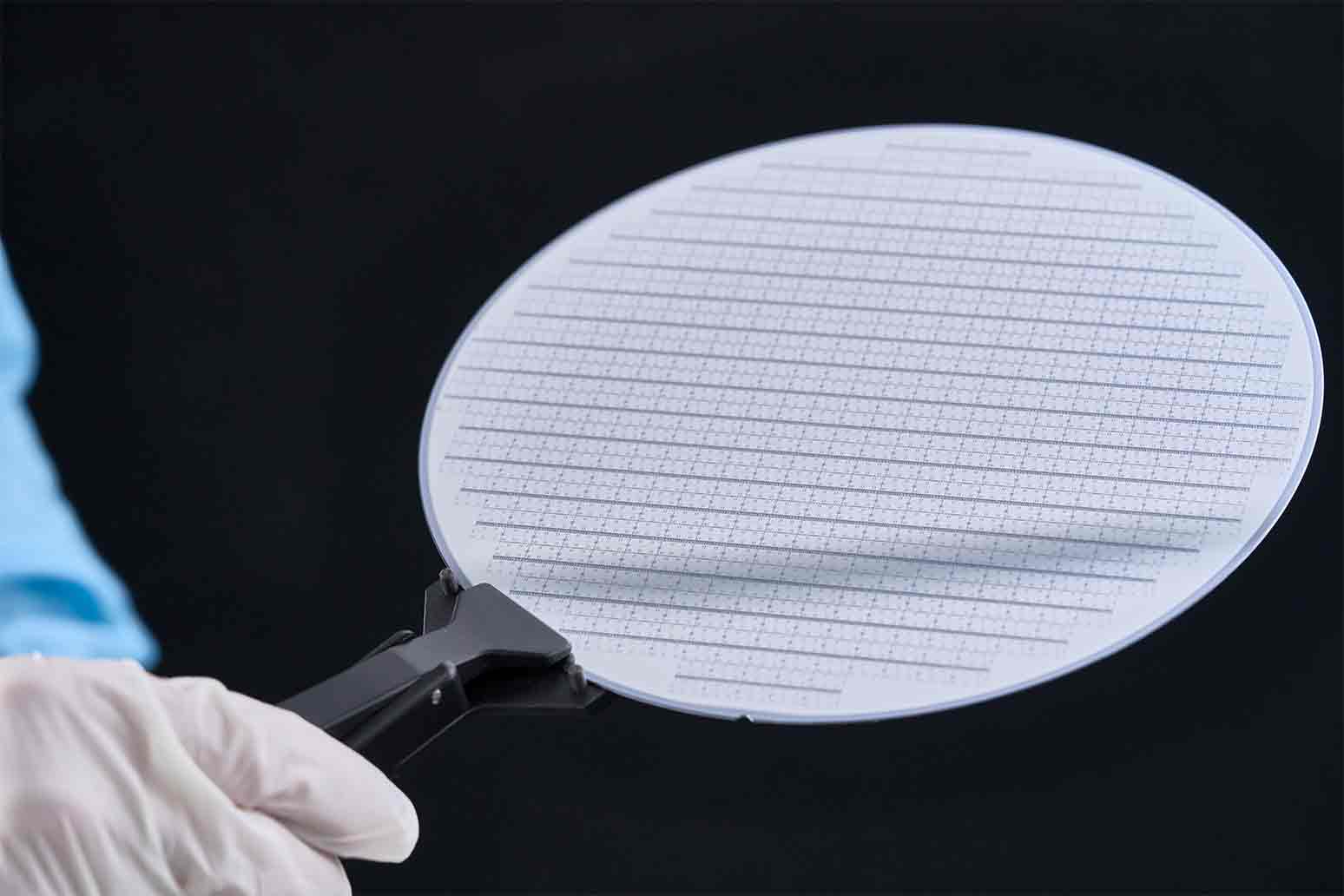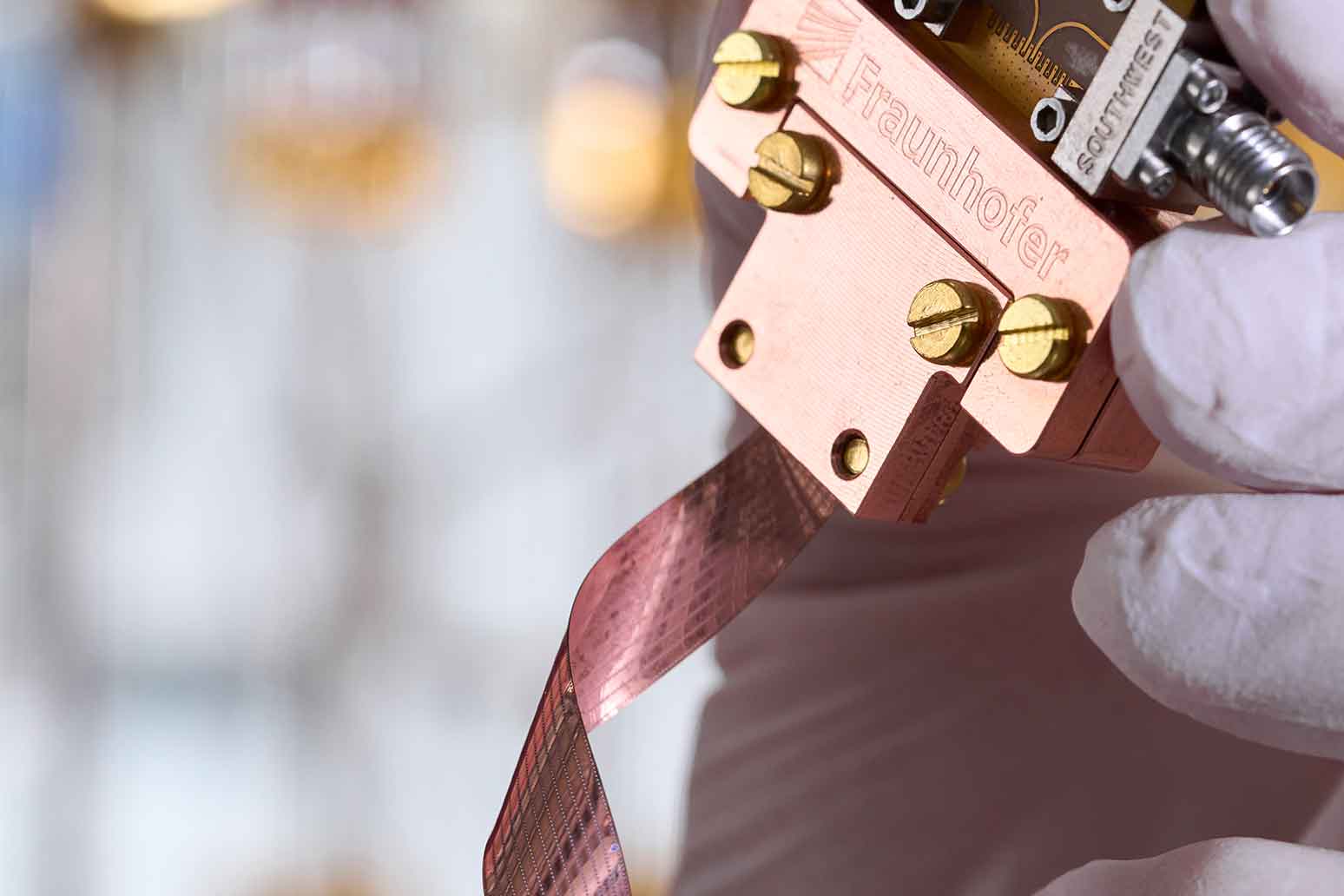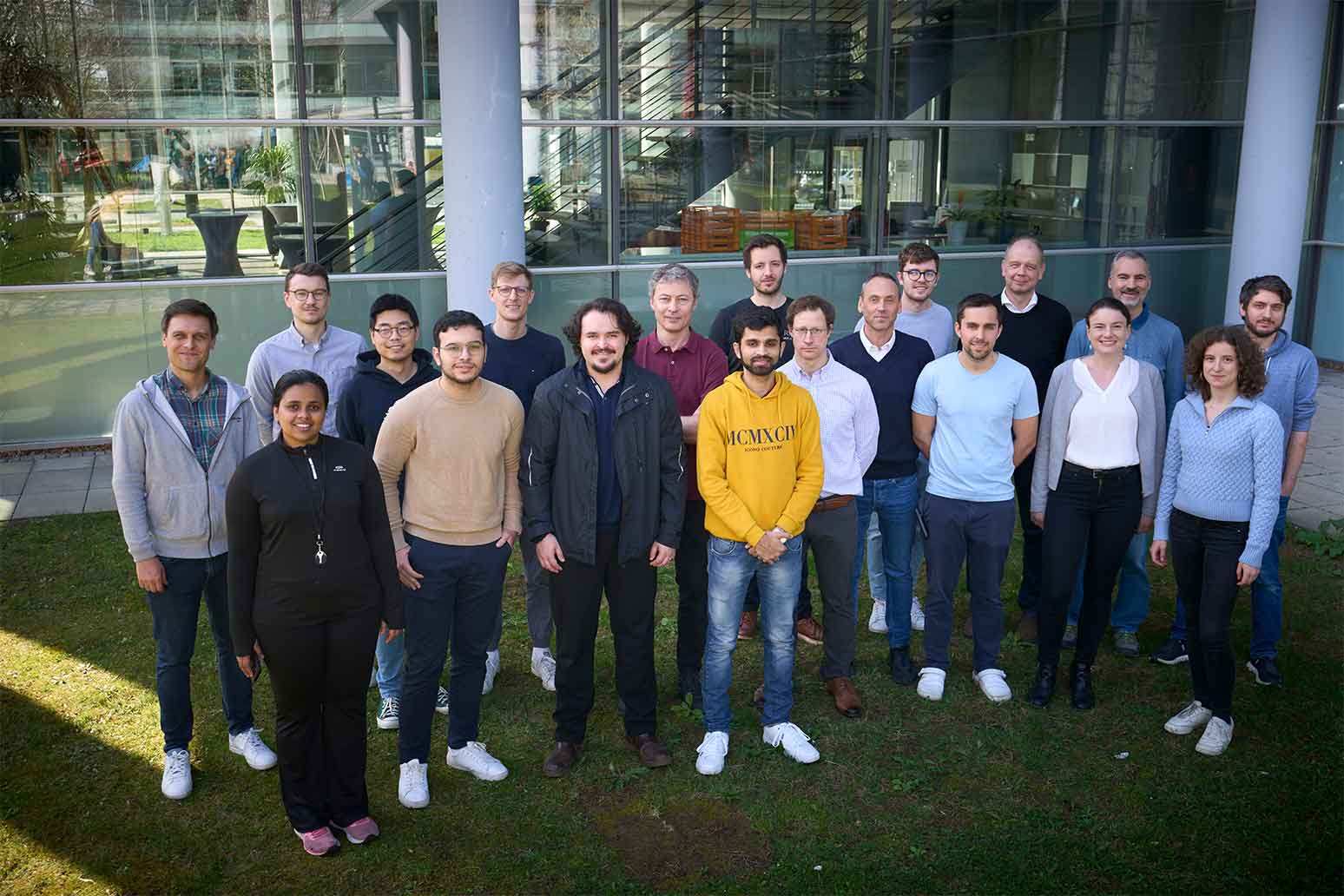Quantum technologies have what it takes to be "game changers": they are the key to realizing the vision of quantum computers that are worlds ahead of even today's supercomputers in terms of speed and performance. In its quantum technologies program, Fraunhofer EMFT is aiming to further develop the core hardware components for quantum computers to production and market readiness. The researchers' long-term goal is to drive forward the development of quantum computers with 1000 qubits or more.
Quantum Technologies

Cutting-edge solutions for scalable quantum hardware and systems
The R&D activities of the Fraunhofer EMFT's Quantum Technologies program focus on scalable hardware components for quantum computers. In addition, greater stability and a significant reduction in costs are essential for a successful transfer to the market.
In order to produce quantum circuits with superconducting qubits in high volumes, production-compatible process technologies for the coating of thin films and 3D patterning are crucial. In this context, researchers at Fraunhofer EMFT are working on solutions such as Wafer-based Superconducting Qubit Fabrication Processes for superconducting qubits, as well as advanced integration technologies such as 200 mm wafer-based heterogeneous 3D Integration for Superconducting Qubits and Ion-trap Qubits. The aim of each is to enable the reproducible and scalable production of quantum processor units (QPUs) with a large number of qubits.
Go flexible: Superconducting Interconnects for the future
The operation of such QPUs at extremely low temperatures requires low-noise and ultra-high-density shielded signal connections in order to handle the huge amount of signal lines. A part of our program for quantum technologies deals with replacing the fixed connections used today with Flexible Low-noise Superconducting Interconnects. This innovative approach enables a much easier, more flexible and space-saving installation. The connections are designed to guarantee minimal heat dissipation - an essential precondition for reducing thermal noise. With our roll-to-roll line, Fraunhofer EMFT provides an efficient and well-proven production technology.
In the chip design and simulation field, we use our comprehensive expertise to realize Superconducting Quantum Circuits for scalable 3D-integrated QPUs. We also develop Components and Systems for Cryogenic Electronics such as ASICS. These are required for signal processing with integrated error correction and enable on-chip architectures for integrated optical/electrical control and readout in quantum computers of the future.
Development and characterization of quantum technologies hand in hand
In addition to our development and design activities, Fraunhofer EMFT provides a wide range of test and analysis techniques for Characterization of Quantum Hardware Components both at room temperature and at cryogenic temperatures of down to 10 mK. This enables us to profoundly evaluate the quality, performance and reliability of the quantum hardware components developed at the institute. Moreover, we also offer these services to external customers.
With these approaches, our program for quantum technologies addresses the central key components to make quantum computing fit for real use outside of laboratory environments. Our broad interdisciplinary engineering expertise in the fields of micro- and nanotechnology, interconnection technology, 3D integration, chip design, characterization and testing provides a solid and strong basis for developing forward-looking solutions from a single source.
Big goals require a strong team: We are therefore part of several leading research initiatives in the field of quantum computing. Fraunhofer EMFT is a partner in Munich Quantum Valley (MQV), a cooperation of university and non-university research institutions in Bavaria, as well as the MUNIQC-SC research project funded by the Federal Ministry of Education and Research (BMBF), in which both public research institutions and industrial partners in Germany are involved. In addition, we are actively involved in the development of the European demonstrator for superconducting quantum computers as part of the OpenSuperQPlus project within the European Quantum Technology Flagship.


